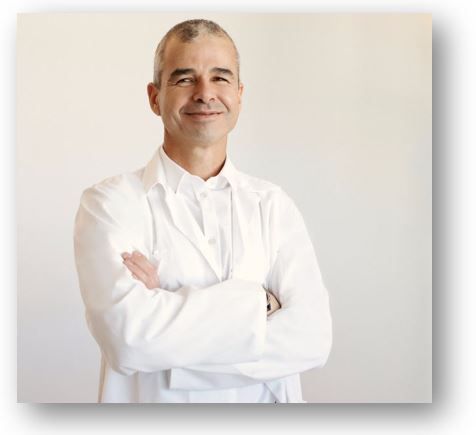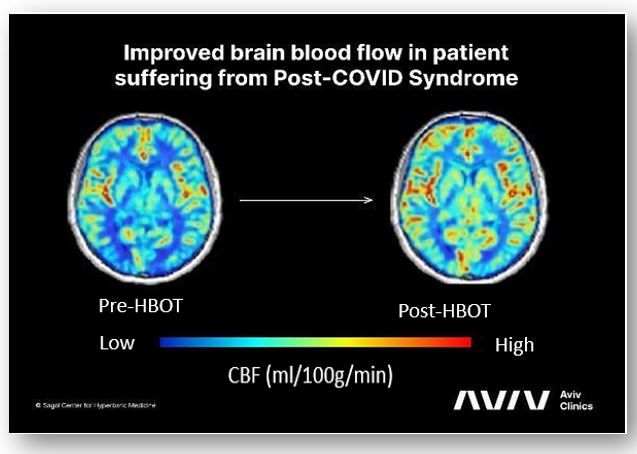- Clinical Technology
- Adult Immunization
- Hepatology
- Pediatric Immunization
- Screening
- Psychiatry
- Allergy
- Women's Health
- Cardiology
- Pediatrics
- Dermatology
- Endocrinology
- Pain Management
- Gastroenterology
- Infectious Disease
- Obesity Medicine
- Rheumatology
- Nephrology
- Neurology
- Pulmonology
Long COVID: Hyperbaric Oxygen Therapy Offers Hope for Understanding and Treating Symptoms
Hyperbaric oxygen therapy in a randomized placebo-controlled trial resulted in improved global cognitive function, energy, sleep, and pain interference in long COVID patients.
Shai Efrati, MD

Millions of Americans of all ages suffer from post-COVID-19 condition, or long COVID. In fact, recent data show that the condition is affecting more than 16 million working-age Americans and is keeping between two and four million of them out of work completely.
According to the World Health Organization, long COVID occurs when an individual continues to suffer from prolonged symptoms of the virus at least 3 months after initial onset. Common symptoms include difficulty thinking or concentrating, sleep trouble, dizziness, headaches, fatigue, brain fog and more. In many cases, these symptoms prove to be debilitating and result in significant health and quality of life issues.
Health care professionals around the globe are working tirelessly to understand, diagnose. and treat long COVID. While there is no single treatment that has been approved to completely rid those with long COVID of their symptoms, a growing body of clinical research supports the potential of a specific hyperbaric oxygen therapy (HBOT) protocol to become part of the standard of care for the condition. A breakthrough randomized controlled trial on use of the protocol for symptom management was published in Scientific Reports in July.
The study was conducted by the Sagol Center for Hyperbaric Medicine and Research at Shamir Medical Center in Israel, known for its pioneering research on novel indications of hyperbaric medicine for cognitive and physical rehabilitation. The cohort was comprised of 73 participants with reported long COVID cognitive symptoms. To study the effectiveness of the HBOT protocol in treating these individuals, patients were randomly assigned to either a treatment or placebo (sham) group. The unique treatment protocol was comprised of 40 daily HBOT sessions, 5 sessions per week.
The randomized, double-blind, placebo-controlled clinical trial demonstrated that HBOT, when used in a specific protocol was effective at improving symptoms of long COVID. Participants showed significant improvement in global cognitive function, energy, sleep, psychiatric symptoms, and pain interference. Participants in the control group did not exhibit these same improvements.
The study revealed that HBOT can induce structural and functional repair of damaged regions of the brain and improve cognitive, behavioral, and emotional function of patients with long COVID conditions.
Image courtesy of Aviv Clinics

Further analysis of the brain network activity of those patients was published in the journal Neuroimage: Clinical and shed additionallight on how COVID can disrupt the normal functionality of the brain. Moreover, the study shows that in post-COVID-19 patients, HBOT improves disruptions observed in white matter tracts (neuronal fibers) and alters the functional connectivity organization of neural pathways attributed to cognitive and emotional recovery.
While HBOT has been used for centuries, this new study indicates that utilizing a specific protocol involving oxygen fluctuation in a multiplace chamber can induce neurogenesis, neuronal stem cell proliferation, increased blood flow, and neuroplasticity. HBOT involves breathing 100% pure oxygen while in a controlled hyperbaric chamber. The air pressure inside is elevated above normal to help the lungs collect more oxygen and more effectively deliver that oxygen to damaged tissues, thus expediting the healing process. Deliberate fluctuations of oxygen levels during each HBOT session work to induce the hypoxia inducible factor, increasing vascularization and promoting angiogenesis in damaged brain tissues.
The specific HBOT protocol studied here is in use for treatment of the symptoms of long COVID at Aviv Clinics through an exclusive partnership with the Sagol Center. The partnership allows Aviv clinics in Florida and Dubai to use the protocols, evaluation methods, and treatments used in the Scientific Reports study. Patient assessment includes high resolution brain imaging to identify damage in the brain caused by the SARS-CoV-2 virus. When combined with the results of intensive cognitive, physical, and nutritional assessments, these scans allow a multidisciplinary team of clinicians to develop a customized treatment program to help each patient.
Shai Efrati, MD, is founder and director of the Sagol Center for Hyperbaric Medicine and Research at Shamir Medical Center, Be'er Ya'akov, Israel, where he also serves as director of research and development and head of nephrology. Efrati’s research focuses on novel aspects of hyperbaric medicine and brain rehabilitation. He is a professor at the Sackler School of Medicine and the Sagol School of Neuroscience in Tel Aviv University. Since 2008, he has served as Chairman of the Israeli Society for Diving and Hyperbaric Medicine.
